-
Introduction
- Hey there! Thinking of selling your used laptop online? Well, you're in for a ride. Let me share some insights on this growing trend and why it's a smart move.
-
Choosing the Right Platform
- So, where do you want to sell? I'll break down the popular online platforms. Each has its perks and downsides. Let me help you decide where to make your move.
-
Researching the Market
- Trust me, knowing the market is your secret weapon. I'll guide you through checking prices for similar laptops. We want to set a price that's fair but competitive.
-
Cleaning and Preparing Your Laptop
- Time to get your hands dirty (not literally). I'll walk you through the steps to make your laptop sparkle. A clean laptop means more interested buyers!
-
Capturing High-Quality Photos
- A picture is worth a thousand words, right? I'll give you some photo tips – angles, lighting, you name it. Let's make your laptop look irresistible.
-
Writing a Compelling Description
- Now, let's write a killer description. I'll help you highlight those cool specs and reasons why someone should grab your laptop.
-
Setting a Realistic Selling Price
- Picking the right price is an art. I'll share some factors to consider and strategies to negotiate without selling yourself short.
-
Creating a Detailed Listing
- Listings can be a maze, but I've got your back. Let's go through the form together. Covering warranty, packaging – all the deets.
-
Communicating with Potential Buyers
- Communication is key, my friend. I'll share tips on handling questions and building trust. We want those buyers feeling confident.
-
Choosing the Right Shipping Method
- Time to send your laptop off into the world. I'll go over shipping options and how to pack your tech baby securely.
-
Monitoring and Closing the Deal
- The waiting game can be nerve-wracking. I'll guide you on staying on top of your listing and sealing the deal – payment and shipping 101.
-
Avoiding Common Mistakes
- Let's steer clear of blunders. Overpricing, miscommunication – I'll spill the tea on common mistakes and how to sidestep them.
-
Conclusion
- Phew, we covered a lot! Quick recap on the key points. Now go, sell that laptop like a pro! If I could, I'd give you a virtual high-five. Best of luck!
1. Introduction
Hey, fellow tech enthusiast! Ever thought about parting ways with your trusty laptop and making a few bucks online? Well, you're in for a treat because selling your used laptop online is not just a transaction – it's an adventure. I've been there, done that, and I'm here to spill the beans on how to navigate this exciting journey while avoiding some common pitfalls. So, buckle up as we dive into the world of selling used laptops online, and I'll be your guide through the do's, don'ts, and everything in between!
Choosing the Right Platform
Selling your used laptop online is like picking the right stage for your laptop to shine. With a myriad of platforms out there, it's crucial to choose the one that aligns with your goals and suits your laptop's vibe. Let's break down the contenders:
-
eBay - The Auction Arena
- eBay is like the bustling auction house of the internet. You set a starting price, and potential buyers bid to win. It's dynamic, but keep in mind that fees can add up.
-
Amazon - The Marketplace Giant
- Amazon is where giants roam. It's massive, trusted, and attracts a broad audience. However, be prepared for a competitive landscape and the Amazon seller fees.
-
Facebook Marketplace - The Local Hangout
- Want to sell to locals? Facebook Marketplace is your digital yard sale. It's straightforward and can lead to quick sales, but beware of meeting strangers for transactions.
-
SellMeLaptop - The Trade-In Pro
- SellMeLaptop offers a straightforward trade-in process. You get an offer, ship your laptop, and receive payment. It's hassle-free, but you might not get top dollar compared to other platforms.
-
SellLaptopBack - The Tech Laptop BuyBack Hub
- Pros:
- Convenient: Get an instant quote online and free, prepaid shipping.
- Fast payout: Receive payment within 48 hours of your laptop being received.
- Safe: Data is wiped and your device is recycled responsibly.
- Cons:
- Lower offers: They typically offer less than what you could get on eBay or Facebook Marketplace.
- Limited scope: Only accepts select brands and models.
- Pros:
-
Craigslist - The Local Bulletin Board
- Craigslist is the OG of online classifieds. It's local, and you get cash in hand. But, be cautious; meeting strangers in person has its risks.
How to Choose? Now, how do you decide? Consider your comfort level, desired selling speed, and the kind of buyers you want to attract. Research fees, read user reviews, and think about whether you prefer a quick sale or are willing to invest time for potentially higher returns.
Remember, the right platform can make all the difference. So, choose wisely, and let the laptop-selling adventure begin!
3. Researching the Market
Alright, let's get down to the nitty-gritty of selling your used laptop – researching the market. It's not just about putting a random price tag and hoping for the best; it's about understanding the game and playing it smart. Here's your roadmap:
-
Know Your Laptop Inside Out:
- Before diving into market prices, know your laptop's specs, age, and any upgrades. Buyers will want to know what they're getting.
-
Check Current Market Trends:
- Markets fluctuate. What was hot last year might not be now. Look for recent sales data of similar laptops to gauge the current demand and pricing trends.
-
Explore Multiple Platforms:
- Don't limit yourself to one platform. Check prices on various websites – eBay, Amazon, Swappa, and others. This helps you get a comprehensive view of the market.
-
Consider Your Laptop's Condition:
- Be realistic about your laptop's condition. If it's in pristine shape with all accessories, you can aim for a higher price. However, if it shows signs of wear, adjust your expectations accordingly.
-
Factor in Extras and Upgrades:
- Got extra RAM, a snappy SSD, or any other upgrades? Highlight them! These can add value and justify a higher price.
-
Be Aware of Seasonal Trends:
- Just like fashion, electronics have seasonal trends. Back-to-school and holiday seasons might see increased demand, affecting prices.
-
Check for Similar Completed Listings:
- Most platforms allow you to check completed listings. See what similar laptops actually sold for, not just what sellers are asking. This gives you a realistic view.
-
Consider the Local Market:
- If you're selling locally, prices might vary. Check local classifieds or community forums to understand the going rates in your area.
-
Be Flexible and Competitive:
- While aiming for a fair price, be willing to adjust. If the market is flooded, a competitive price can attract more buyers.
-
Set a Realistic Asking Price:
- Based on your research, set an asking price that reflects the market but also gives you room for negotiation.
Remember, knowledge is power. The more you know about the market, the better equipped you are to make informed decisions and secure a sweet deal for your beloved laptop. Happy hunting!
4. Cleaning and Preparing Your Laptop
Ah, the pre-sale makeover! Just like presenting a car to a potential buyer, your laptop needs to look its best. Here's a step-by-step guide to cleaning and prepping your tech companion:
-
Gather Your Cleaning Arsenal:
- Get your cleaning supplies ready – microfiber cloth, isopropyl alcohol, cotton swabs, and a can of compressed air. Let's make that laptop shine!
-
Power Down and Disconnect:
- Safety first! Power down your laptop and disconnect it from any power source. This ensures you can clean without any electrical mishaps.
-
Dust Off the Exterior:
- Use compressed air to blow away dust from the keyboard, vents, and ports. A dust-free laptop not only looks better but also runs smoother.
-
Wipe Down the Surfaces:
- Dampen a microfiber cloth with a bit of isopropyl alcohol. Gently wipe down the exterior surfaces, including the screen, keyboard, and touchpad. Be careful not to let any liquid seep into the internals.
-
Clean the Keyboard:
- Those keys have stories to tell! Use a cotton swab dipped in isopropyl alcohol to clean between the keys. If you're feeling adventurous, you can carefully remove and clean the keys individually.
-
Sanitize Touchpoints:
- Given the times we're in, it's a good idea to sanitize the frequently touched areas. A quick wipe with a disinfectant won't hurt.
-
Remove Stickers and Residue:
- If your laptop is a sticker haven, peel off any stickers and remove adhesive residue. A bit of rubbing alcohol can help dissolve stubborn residue.
-
Check the Screen:
- Gently wipe the screen with a clean, dry microfiber cloth. If there are persistent smudges, use a screen cleaner designed for electronics.
-
Inspect Ports and Connections:
- A flashlight can be your detective tool here. Check for any dust or debris in the ports. A can of compressed air comes in handy again.
-
Update and Reset:
- Take the time to update your operating system and reset the laptop to factory settings if you're comfortable doing so. A fresh start is always appealing to buyers.
-
Organize Accessories:
- Gather all original accessories – chargers, cables, and manuals. Organize them neatly; a complete package is attractive to buyers.
-
Document Any Flaws:
- Be honest about any flaws. If there's a scratch or a quirky key, document it. Transparency builds trust.
-
Take After Photos:
- Snap some high-quality photos of your cleaned and prepped laptop. Show off its best angles and features.
Remember, a well-maintained laptop not only looks appealing but also reflects the care you've given it. Now that your laptop is a head-turner, it's ready to charm potential buyers!
5. Capturing High-Quality Photos
A picture is worth a thousand words, right? Well, when it comes to selling your used laptop online, a good photo can make or break a deal. Let's dive into the art of capturing high-quality photos that showcase your laptop's true beauty:
-
Natural Light is Your Best Friend:
- Choose a well-lit space with natural light. Avoid harsh direct sunlight, but aim for a bright, evenly lit area. It brings out the details and colors.
-
Clean Background, Clear Focus:
- Keep the background clutter-free. A neutral surface like a clean desk or table works best. Ensure your laptop is the star, and the background doesn't distract.
-
Angles Matter:
- Capture your laptop from various angles. Front, back, sides – give potential buyers a 360-degree view. Close-up shots of specific features can also be enticing.
-
Highlight Special Features:
- If your laptop has standout features like a sleek design or a high-res display, make sure to capture those up close. Showcase what makes it unique.
-
Show Accessories and Packaging:
- Lay out the original accessories neatly beside your laptop. Include the packaging if available. It adds value and reassures buyers they're getting the complete package.
-
Focus on Details:
- Zoom in on details like the keyboard, ports, and any distinctive markings. Buyers want to see what they're getting up close.
-
Include a Size Reference:
- Place a common item, like a pen or smartphone, next to your laptop to give viewers a sense of its size. It helps them visualize the proportions.
-
Use a Tripod for Stability:
- If possible, use a tripod for stable shots. It eliminates shaky hands and ensures your photos are crisp and clear.
-
Clean Your Camera Lens:
- Whether you're using a smartphone or a camera, make sure the lens is clean. A smudged lens can affect the photo quality.
-
Avoid Filters, Keep it Real:
- While filters might be fun on social media, keep your listing photos natural. Buyers want an accurate representation of the product.
-
Capture Flaws Honestly:
- If your laptop has any imperfections, don't shy away. Capture them clearly. It builds trust, and buyers appreciate honesty.
-
High Resolution is Key:
- Set your camera or smartphone to the highest resolution possible. It ensures your photos are sharp and can be zoomed in without losing quality.
-
Edit with Caution:
- If you choose to edit your photos, do so sparingly. Correct lighting or enhance colors if needed, but avoid heavy editing that misrepresents the laptop.
Remember, your photos are the first impression potential buyers get of your laptop. Make it a good one! Now go ahead, grab that camera, and let's make your laptop shine on the digital runway.
6. Writing a Compelling Description
Now that we've captured your laptop's essence in stunning photos, it's time to weave a compelling narrative through words. Let's create a description that not only informs but also entices potential buyers to hit that "Buy Now" button:
-
Start with a Captivating Headline:
- Grab attention from the get-go. Craft a headline that highlights your laptop's best feature or its unique selling proposition.
-
Introduce Your Laptop:
- Begin with a friendly greeting. Introduce your laptop like you're introducing a close friend. Share its brand, model, and any standout features.
-
Highlight Key Specifications:
- Dive into the technical details. Mention processor type, RAM, storage capacity, screen size, and any other relevant specs. Tech-savvy buyers appreciate the specifics.
-
Emphasize Upgrades or Extras:
- If you've upgraded components or included extra accessories, shout it out. Buyers love added value.
-
Tell Its Story:
- Share a bit about your laptop's history. Mention how it served you well, any memorable moments, and why you're parting ways. Create a connection.
-
Explain the Condition:
- Be transparent about the condition. If it's like new, say so. If there are minor scratches or wear, detail them honestly. Trust is key.
-
Describe Performance:
- Highlight how your laptop performs. Whether it's a speedy workhorse or a reliable companion for entertainment, paint a picture of its capabilities.
-
Mention Software and OS:
- Specify the installed software and operating system. Buyers want to know if it's ready to use out of the box.
-
Share Warranty or Guarantee:
- If your laptop is still under warranty or if you're offering any guarantees, make it clear. It adds a layer of assurance for the buyer.
-
Explain the Reason for Selling:
- Briefly touch on why you're selling. Whether you upgraded, received a gift, or simply need the cash – let buyers in on the story.
-
Detail Accessories Included:
- List all the accessories included – chargers, cables, original packaging. It reinforces that the buyer is getting a complete package.
-
Use Descriptive Language:
- Paint a vivid picture with your words. Instead of just saying "good condition," say "immaculate condition" or "well-maintained."
-
Set a Competitive Price:
- Reinforce why your laptop is worth the asking price. Mention its features, condition, and any extras to justify the value.
-
Call to Action:
- Wrap it up with a call to action. Invite potential buyers to reach out with questions or, better yet, make the purchase.
-
Contact and Negotiation Details:
- Specify how potential buyers can reach you. Whether it's through the platform's messaging system or other means, provide clear contact information. If you're open to negotiation, express that too.
Remember, your description is your sales pitch. Be genuine, highlight the positives, and address potential concerns. Now, let's get those words flowing and turn browsers into buyers!
7. Setting a Realistic Selling Price
Alright, let's talk numbers. Setting the right price for your laptop can be a bit of an art, but fear not – I've got your back. Here's how you can arrive at a realistic and appealing selling price:
-
Research Comparable Listings:
- Start by checking similar listings. What are other sellers asking for laptops with similar specs and conditions? This sets the baseline.
-
Consider Your Laptop's Condition:
- Be honest about your laptop's condition. If it's in pristine shape, you can aim for a slightly higher price. For wear and tear, adjust accordingly.
-
Factor in Upgrades and Extras:
- If you've upgraded components or are including valuable extras like accessories or original packaging, add some value to your asking price.
-
Check Recent Sold Items:
- Look for laptops similar to yours that have recently sold. This gives you a real-world view of what buyers are willing to pay.
-
Calculate Depreciation:
- Laptops, like any tech, depreciate over time. Consider the age of your laptop and how much it has depreciated since its original purchase.
-
Be Competitive:
- Aim for a competitive price. If your laptop is priced too high, it might deter potential buyers. If it's too low, buyers might question its quality.
-
Account for Platform Fees:
- Keep in mind the fees charged by the selling platform. Adjust your asking price to ensure you still get the desired amount after fees.
-
Set a Negotiation Buffer:
- Buyers often like to negotiate. Set your initial asking price with a bit of wiggle room for negotiations, but ensure it's still within a reasonable range.
-
Check Market Trends:
- Markets can change. If there's a sudden surge in demand for laptops or a new model release, it might impact your laptop's value. Stay aware of market trends.
-
Consider Local Market Rates:
- If you're selling locally, check the rates in your area. Local markets can have different pricing dynamics.
-
Factor in Warranty:
- If your laptop is still under warranty, it adds value. Mention this in your listing, and it can justify a higher price.
-
Research Multiple Platforms:
- Prices can vary between platforms. If you're listing on multiple platforms, ensure your price is competitive across all of them.
-
Ask for Feedback:
- Seek feedback from friends or online communities. They might provide insights you hadn't considered.
-
Test the Waters with Best Offers:
- Some platforms allow buyers to make offers. Consider listing your laptop with a "Best Offer" option to see what buyers are willing to pay.
-
Trust Your Instincts:
- Lastly, trust your instincts. If you've done your research and feel confident in your pricing, go for it.
Remember, setting the right price is about finding the sweet spot between attracting buyers and getting fair value for your laptop. Now, go ahead, crunch those numbers, and let's find that perfect price tag!
8. Creating a Detailed Listing
Alright, it's time to turn your laptop into an irresistible online listing. Follow these steps to create a detailed and compelling listing that will make potential buyers eager to make your laptop their own:
-
Craft a Catchy Title:
- Start with a title that grabs attention. Highlight a key feature or use descriptive words to make your laptop stand out in search results.
-
Provide a Detailed Description:
- Go beyond the basics. Describe your laptop's brand, model, and key specifications. Share its story, mention any upgrades, and highlight what makes it special.
-
Specify Condition and Age:
- Be transparent about the condition. Mention if it's like new, gently used, or shows signs of wear. State the age of the laptop to give buyers context.
-
Detail Technical Specifications:
- Create a section that outlines the technical specifications – processor type, RAM, storage capacity, screen size, graphics card, etc. Tech-savvy buyers will appreciate the specifics.
-
Highlight Upgrades and Extras:
- If you've upgraded components or are including extra accessories, shout it out in a dedicated section. Let buyers know they're getting more for their money.
-
Include Original Accessories:
- List all the original accessories that come with the laptop – chargers, cables, manuals, and original packaging. A complete package adds value.
-
Share Warranty Information:
- If your laptop is still under warranty or if you're offering any guarantees, make it clear. Buyers appreciate knowing they're covered.
-
Describe Performance and Usage:
- Provide insights into how the laptop performs. Is it a powerhouse for gaming, a reliable workhorse, or a versatile all-rounder? Share any specific use cases.
-
Mention Software and Operating System:
- Specify the software installed and the operating system. Buyers want to know if the laptop is ready to use right out of the box.
-
Document Flaws Honestly:
- If there are any flaws or imperfections, be honest about them. Detailing any scratches or issues builds trust with potential buyers.
-
Set a Competitive Price:
- Reiterate the asking price. Explain why your laptop is worth that amount, considering its features, condition, and any extras included.
-
Include High-Quality Photos:
- Embed high-quality photos in your listing. Showcase the laptop from different angles, highlight key features, and include shots of accessories and packaging.
-
Specify Contact Information:
- Clearly mention how potential buyers can reach out to you. Provide contact information or direct them to the platform's messaging system.
-
Outline Shipping Details:
- If you're offering shipping, provide details – shipping method, estimated delivery time, and any associated costs. If it's local pickup, specify that option.
-
Encourage Questions and Offers:
- Invite potential buyers to ask questions or make offers. Creating an open line of communication can lead to a smoother transaction.
Remember, your listing is your pitch. Be thorough, honest, and highlight the features that make your laptop a great buy. Now, hit that "Publish" button and let the offers roll in!
9. Communicating with Potential Buyers
Great! You've got potential buyers showing interest in your laptop. Now, let's navigate the communication process smoothly to build trust and facilitate a successful transaction:
-
Respond Promptly:
- Time is of the essence. Respond to inquiries as quickly as possible. A prompt response shows that you're serious about the sale.
-
Be Courteous and Professional:
- Keep your communication courteous and professional. Even in casual online transactions, a polite tone goes a long way in building a positive relationship.
-
Answer Questions Thoroughly:
- Buyers might have questions about specifications, condition, or any extras. Answer questions thoroughly, providing the information they need to make an informed decision.
-
Share Additional Photos if Requested:
- If a potential buyer requests additional photos or details, be accommodating. This demonstrates transparency and a willingness to assist.
-
Clarify Terms and Conditions:
- Clearly communicate your terms – whether you accept returns, the shipping method, and any other conditions. Avoid misunderstandings by laying out the terms upfront.
-
Negotiate Politely:
- If a buyer wants to negotiate the price, be open to discussion. Politely consider their offer and be willing to find a middle ground that satisfies both parties.
-
Provide Assurance on Product Authenticity:
- Reassure buyers about the authenticity of your laptop. Mention any security measures you've taken to verify the product's legitimacy.
-
Encourage Local Buyers for Smooth Transactions:
- If you're open to local transactions, encourage local buyers. Meeting in person allows them to inspect the laptop, and you can complete the transaction more smoothly.
-
Discuss Payment Methods:
- Clearly discuss accepted payment methods. Whether it's through the platform, bank transfer, or another secure method, ensure both parties are comfortable with the chosen option.
-
Coordinate Shipping Details:
- If the buyer is not local, coordinate shipping details. Specify the shipping method, estimated delivery time, and any tracking information.
-
Provide Tracking Information:
- Once the laptop is shipped, share the tracking information promptly. It adds a layer of transparency and reassures the buyer about the shipment's progress.
-
Follow Up After Delivery:
- After the buyer receives the laptop, follow up to ensure everything is in order. This step further establishes trust and shows your commitment to customer satisfaction.
-
Handle Disputes Professionally:
- In the rare event of disputes, handle them professionally. Follow the platform's guidelines, and work towards a resolution that satisfies both parties.
-
Ask for Feedback:
- After a successful transaction, ask the buyer for feedback. Positive reviews enhance your credibility for future transactions.
-
Maintain Open Communication:
- Throughout the process, maintain open communication. A transparent and communicative approach builds trust and makes the entire experience more positive.
Remember, effective communication is the backbone of a successful online sale. By being responsive, transparent, and courteous, you're creating a positive experience for both you and the buyer. Now, go ahead and seal the deal with confidence!
10. Choosing the Right Shipping Method
Alright, it's time to send your laptop off to its new home. Choosing the right shipping method ensures a smooth and secure delivery. Let's navigate the shipping process:
-
Consider the Laptop's Value:
- Take the value of your laptop into account. For high-value items, consider shipping methods that offer insurance and tracking for added security.
-
Check Platform Recommendations:
- Many selling platforms provide recommendations for shipping methods. Check the platform's guidelines and follow their suggested shipping practices.
-
Use a Reputable Shipping Carrier:
- Opt for reputable shipping carriers with a track record of reliable deliveries. Popular carriers like UPS, FedEx, and DHL are often safe choices.
-
Choose a Tracked Service:
- Always choose a shipping method with tracking. This allows both you and the buyer to monitor the shipment's progress and reduces the risk of lost packages.
-
Consider Expedited Options:
- If you want to provide a quicker delivery option, consider expedited shipping services. Keep in mind that this may come with higher shipping costs.
-
Factor in Distance and Delivery Time:
- Consider the distance between you and the buyer. Choose a shipping method that provides a reasonable delivery time based on the distance.
-
Offer Local Pickup if Feasible:
- If you're comfortable and the buyer is local, consider offering local pickup. It eliminates shipping hassles and allows for a face-to-face transaction.
-
Calculate Shipping Costs:
- Calculate shipping costs accurately. Consider the weight, dimensions, and destination. Clearly communicate any shipping costs to the buyer upfront.
-
Ensure Adequate Packaging:
- Proper packaging is crucial. Use a sturdy box with sufficient padding to protect the laptop from damage during transit. Consider anti-static materials for additional protection.
-
Insure High-Value Shipments:
- For high-value laptops, consider purchasing shipping insurance. This provides coverage in case of loss or damage during transit.
-
Label Clearly and Accurately:
- Clearly and accurately label the package. Include the buyer's address, contact information, and any necessary shipping labels provided by the carrier.
-
Share Tracking Information Promptly:
- Once the laptop is shipped, share the tracking information promptly with the buyer. This keeps them informed and allows them to anticipate the delivery.
-
Monitor Shipment Progress:
- Keep an eye on the shipment's progress. If you notice any delays or issues, address them promptly with the shipping carrier.
-
Communicate Delays in Advance:
- If, for any reason, there are delays in shipping, communicate this to the buyer in advance. Transparency builds understanding.
-
Confirm Delivery:
- Once the laptop is delivered, confirm with the buyer. It helps conclude the transaction on a positive note.
Choosing the right shipping method ensures that your laptop reaches its destination safely and that both you and the buyer have a positive experience. Now, pack that laptop securely, choose the optimal shipping method, and send it off with confidence!
11. Monitoring and Closing the Deal
Congratulations! You're in the final stages of the laptop-selling journey. Let's make sure you monitor the transaction and close the deal smoothly:
-
Track Shipment Progress:
- Keep a close eye on the shipment's progress using the tracking information. Monitor for any updates and ensure it's moving towards the buyer as expected.
-
Address Any Issues Promptly:
- If there are any hiccups during shipping, such as delays or unexpected events, address them promptly. Keep the buyer informed and work towards a resolution.
-
Confirm Delivery with the Buyer:
- Once the laptop is delivered, confirm with the buyer that they've received it. This step ensures the buyer is satisfied and marks the successful conclusion of the deal.
-
Promptly Confirm Payment:
- If the buyer hasn't already confirmed payment, prompt them to do so. Ensure that the agreed-upon amount is processed and finalized.
-
Encourage Feedback:
- After the deal is closed, encourage the buyer to leave feedback. Positive reviews enhance your reputation for future transactions.
-
Express Gratitude:
- Take a moment to express gratitude to the buyer. A simple thank-you message shows appreciation and leaves a positive impression.
-
Request Confirmation of Satisfaction:
- Politely ask the buyer to confirm their satisfaction with the purchase. This step ensures that all aspects of the transaction met their expectations.
-
Double-Check Platform Policies:
- Review the platform's policies to ensure you've followed all guidelines for a successful transaction. This includes confirming receipt of payment, adhering to shipping protocols, and more.
-
Update Your Listing Status:
- If applicable, update the status of your listing to reflect that the laptop has been sold. This helps you avoid unnecessary inquiries and keeps your account organized.
-
Consider Leaving Buyer Feedback:
- If the platform allows, consider leaving feedback for the buyer. Acknowledge positive interactions and prompt payment. It contributes to a positive community environment.
-
Archive or Save Transaction Records:
- Archive or save records related to the transaction, including communication with the buyer, shipping details, and payment confirmation. These records can be useful for reference.
-
Stay Responsive for Post-Sale Questions:
- Even after the sale is complete, remain responsive. The buyer might have post-sale questions or require additional assistance. A continued positive interaction can lead to repeat business or positive recommendations.
-
Close the Listing if Necessary:
- If your listing is still active on the platform, close or deactivate it to avoid any further inquiries or confusion.
-
Consider Future Transactions:
- If you enjoyed the selling process, consider it a successful venture, and be open to future transactions. Your positive experience might lead to more successful sales in the future.
-
Reflect on the Experience:
- Take a moment to reflect on the entire selling experience. Note what worked well, any challenges faced, and areas for improvement. This reflection can inform your approach in future transactions.
Closing the deal smoothly is the final touch to your laptop-selling journey. With a satisfied buyer and a successful transaction, you've navigated the process like a pro. Now, celebrate your success and perhaps start thinking about what tech adventure awaits you next!
12. Avoiding Common Mistakes
Selling your used laptop can be a breeze if you steer clear of common pitfalls. Here's a guide on avoiding those mistakes to ensure a smooth and successful selling experience:
-
Ignoring Market Research:
- Mistake: Setting an arbitrary price without researching the current market trends.
- Avoidance: Conduct thorough market research to understand the value of your laptop based on its specifications, condition, and current demand.
-
Neglecting Detailed Descriptions:
- Mistake: Providing vague or incomplete details about your laptop.
- Avoidance: Create a detailed and honest description, highlighting key features, specifications, and any imperfections. Transparency builds trust.
-
Overlooking Quality Photos:
- Mistake: Uploading low-quality or insufficient photos.
- Avoidance: Capture high-quality photos that showcase your laptop from various angles. Clear visuals attract potential buyers.
-
Setting an Unrealistic Price:
- Mistake: Overpricing or underpricing your laptop.
- Avoidance: Set a realistic and competitive price based on market research. Factor in the laptop's age, condition, and any extras.
-
Neglecting Communication:
- Mistake: Delayed or inadequate communication with potential buyers.
- Avoidance: Respond promptly to inquiries, be courteous, and provide thorough answers. Clear communication fosters a positive transaction.
-
Choosing the Wrong Shipping Method:
- Mistake: Opting for an unreliable or inappropriate shipping method.
- Avoidance: Select a reputable shipping carrier with tracking and insurance options. Proper packaging is crucial to prevent damage.
-
Ignoring Platform Policies:
- Mistake: Neglecting the rules and guidelines of the selling platform.
- Avoidance: Familiarize yourself with the platform's policies regarding payments, shipping, and communication. Adhering to guidelines ensures a smooth process.
-
Underestimating Packaging:
- Mistake: Inadequate or improper packaging leading to potential damage during shipping.
- Avoidance: Pack your laptop securely with proper padding and use a sturdy box. Consider anti-static materials for added protection.
-
Disregarding Security Measures:
- Mistake: Neglecting to secure your personal information before selling.
- Avoidance: Remove personal data, log out of accounts, and perform a factory reset if needed. Protect your privacy and the buyer's security.
-
Failing to Confirm Payment:
- Mistake: Not confirming the payment before shipping the laptop.
- Avoidance: Ensure that the buyer has processed the payment before initiating the shipping process. This safeguards you from potential fraud.
-
Not Seeking Feedback:
- Mistake: Overlooking the opportunity to gather buyer feedback.
- Avoidance: Encourage buyers to leave feedback after the transaction. Positive reviews enhance your credibility for future sales.
-
Ignoring Post-Sale Responsiveness:
- Mistake: Becoming unresponsive after the sale is complete.
- Avoidance: Stay responsive to address any post-sale questions or concerns. Positive post-sale interactions contribute to a good overall experience.
-
Forgetting Local Pickup Option:
- Mistake: Not considering local pickup as an option.
- Avoidance: If feasible, offer local pickup. It provides a convenient option for buyers and eliminates shipping-related complexities.
-
Overlooking Platform Notifications:
- Mistake: Ignoring platform notifications and messages.
- Avoidance: Regularly check and respond to platform notifications and messages. Timely communication is essential for a successful transaction.
-
Skipping Reflection on Past Transactions:
- Mistake: Failing to reflect on past transactions for improvement.
- Avoidance: Take note of what worked well and any challenges faced during the selling process. Use this feedback to enhance your approach in future transactions.
By steering clear of these common mistakes, you pave the way for a successful and positive selling experience. Now, armed with this knowledge, go ahead and make that laptop sale a seamless journey!
13. Conclusion
Conclusion
Congratulations on reaching the conclusion of your journey to sell your used laptop! You've navigated through various stages, from preparing your laptop for sale to communicating with potential buyers and finally closing the deal. As you reflect on this experience, remember the key takeaways:
-
Preparation is Key:
- Cleaning, researching, and preparing your laptop for sale sets the foundation for a successful transaction. A well-maintained and accurately represented product attracts confident buyers.
-
Communication Builds Trust:
- Clear and prompt communication with potential buyers fosters trust. Providing detailed information, answering questions, and being transparent throughout the process contribute to a positive experience.
-
Research Informs Decisions:
- Thorough market research is essential for setting a realistic price and understanding current trends. Knowledge about your laptop's value in the market empowers you to make informed decisions.
-
Details Matter in Listings:
- Crafting a compelling listing with high-quality photos and a detailed description captures the attention of potential buyers. Highlighting your laptop's features and condition makes it stand out.
-
Shipping Requires Careful Consideration:
- Choosing the right shipping method, packaging your laptop securely, and providing tracking information ensures a smooth delivery process. Attention to shipping details safeguards against potential issues.
-
Closing the Deal with Professionalism:
- Monitoring the transaction, confirming payment, and following up after delivery are crucial steps to close the deal professionally. Maintaining open communication and expressing gratitude contribute to a positive buyer-seller relationship.
-
Avoiding Common Mistakes Enhances Success:
- Steering clear of common mistakes, such as setting unrealistic prices, neglecting communication, and choosing the wrong shipping method, contributes to a smoother selling experience.
Popular laptops people sell to CashALaptop:
- Dell Latitude 7490 Intel Core I7 8th
Dell uses the Latitude brand for a wide range of computing products, including laptops, tablets and Ultrabooks. 14-inch Dell Latitude 7490 put productivity first and foremost. This machine not only offers tons of speed and a comfy keyboard that's made for epic typing sessions but also lasts nearly 9 hours on a single charge, The Latitude 7490's battery life doesn't match that of some competitors, and its underside can get warm, but this laptop packs nearly everything you need to become your team's MVP. Sell Dell Latitude 7490 Intel Core I7 8th laptop
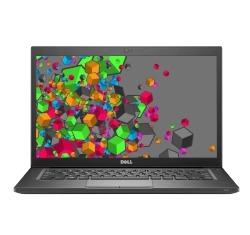
- HP EliteBook 840 G3 Intel Core I5 6th Gen
the HP EliteBook 840 empowers users to create, connect, and collaborate, using enterprise-class performance technology that helps keep you productive in and out of the office. Ideal for mobile professionals needing best-in-class,business rugged notebooks with enhanced system and graphic performance in a managed-IT environment. Also the best mainstream business laptop you can buy. Build quality and reliability is very good for the price point. Performance is quite good on the SSD equipped models.
Sell HP EliteBook 840 G3 Intel Core I5 6th Gen laptop
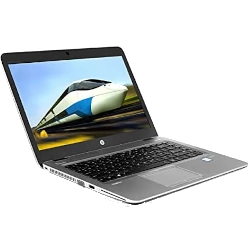
- Acer Swift 1 14
It has a 14-inch FHD display and a slim, lightweight build with slender bezels packed into a sleek design - from first glance, you might expect this to be a much pricier laptop than it is. The Acer Swift 1 isn’t just about offering a budget platform for Windows 10 Home though, and Acer is keen to push how stylish this machine is. Available in several 13.3- and 14-inch flavors (our test unit is the 13.3-inch model SF113-31-P5CK), the Swift 1 resembles Apple's venerable MacBook Air—a rounded, silver wedge, approximately a hundred times more businesslike than the colorful plastic of machines like the Dell 3162 or the HP Stream 11-y010nr.
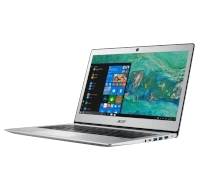
- Alienware X17 R1 Intel Core I9 11th Gen RTX
The 17.3-inch Alienware laptop series has had an avalanche of changes these past few years. Dell Computers inc introduced a brand new Alienware m17 R1 chassis in 2019 only to replace it with a fully redesigned m17 R2 chassis just a year later in 2020. For 2021, the Dell has introduced yet another full chassis redesign to replace the m17 series altogether called the Alienware x17.
Sell Alienware X17 R1 Intel Core I9 11th Gen RTX laptop
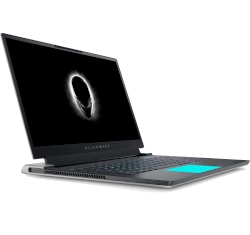
- Aorus 7 SB GeForce GTX 1660Ti
This 17.3-incher combines a 144Hz display, a six-core Intel Core i7 processor, and a 6GB Nvidia GeForce GTX 1660 Ti graphics card for smooth fragging in the latest games and esports, and it has enough space to hold them all thanks to its dual storage drives. The Core i7-10750H processor and the GeForce RTX 2060 GPU, it brings all the latest games smoothly onto the screen.
Sell Aorus 7 SB GeForce GTX 1660Ti laptop
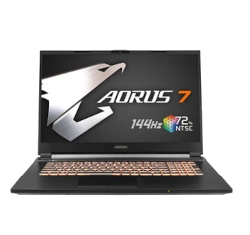
- Apple MacBook Pro 16 Core M1 2021
Apple Mac Pro 16 is an ultimate Mac laptop, the 2021 Apple MacBook Pro 16-Inch is a finely engineered, high-octane workstation that will thrill content creators. The pumped-up M1 Max silicon in our tester, though, is beyond mere bragging rights—it's reserved for creative pros with specialized needs. This MacBook has an M1 Max SoC with 10 CPU cores and 32 GPU cores, 32GB of unified memory, and 512GB of storage. If you have a lighter workload that doesn't require as much graphical processing power, you can configure the MacBook Pro with an M1 Pro chip with 16 GPU cores or an M1 Max chip with 24 GPU cores.
Sell Apple MacBook Pro 16 Core M1 2021 8TB SSD laptop
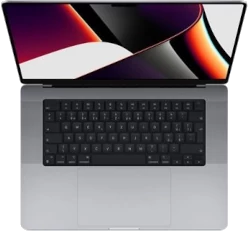
- ASUS VivoBook X542BA Series AMD
Having an AMD in place of an Intel might surely save you a couple of bucks, but it effectively results in somewhat less power. Common specs are AMD Dual Core A9-9420 up to 3.5 GHz, AMD Radeon R5 Graphics, 8 GB DDR4 RAM, 1 TB HDD, Windows 10.
Sell ASUS VivoBook X542BA Series AMD laptop
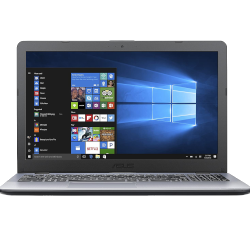
- Dell Inspiron 17 7706 Intel Core I7 11th Gen
Dell Inspiron 7706 Series 17 inch QHD+ TrueLife Touch Narrow Border Display is stylish, versatile and packed with power. Your Inspiron is crafted to be portable, so you can stay productive and keep in touch wherever you are. It’s thin and has a light, easy-open design. Add beauty to your desk the moment you open your laptop. Enjoy the crisp detail of 17 inch QHD+ (2560 x 1600) TrueLife Touch Narrow Border Display to see everything better, especially outside or in bright light. Intel Iris Xe Graphics provides Crystal clear quality.
Sell Dell Inspiron 17 7706 Intel Core I7 11th Gen laptop
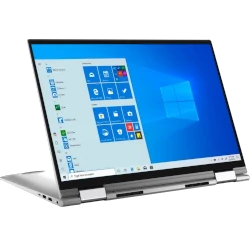
- Fujitsu Notebook LIFEBOOK U9312X Intel Core 12th Gen
The U9310X and U939X. It is still an extremely mobile business convertible with a weight of just over 1 kg (~2.2 pounds) including the stylus, but you can see the age of the case especially in the wide screen edges and the (by today's standards) tiny touchpad. The U9311X is also available in black and red casing. All in all, the U9311X naturally remains an extremely mobile companion with good connectivity. Especially in the area of display and input devices.
Sell Fujitsu Notebook LIFEBOOK U9312X Intel Core 12th Gen laptop
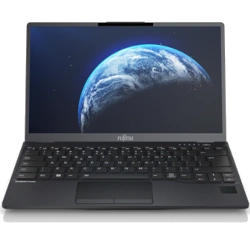
- Gateway 15.6" FHD Ultra Slim Intel Quad-Core I5 1035G1 3.6GHz 16GB DDR4 256GB SSD
The 15.6-inch Gateway Ultra Slim Notebook features a 1080p screen that brings a crystal-clear picture for any and all of your tasks. The Intel Core i5 processor lets you ease through your daily tasks, paired with the Tuned by THX Audio lets you experience the theatre level quality while in the convenience of your home.
Sell Gateway 15.6" FHD Ultra Slim Intel Quad-Core I5 1035G1 3.6GHz 16GB DDR4 256GB SSD laptop
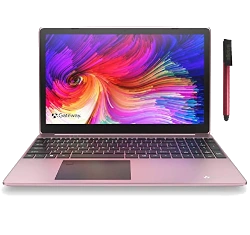
As you celebrate the successful sale of your used laptop, take a moment to pat yourself on the back. Your efforts in presenting a well-maintained product, communicating effectively, and navigating the selling process have paid off. Whether you're a seasoned seller or a first-timer, the lessons learned from this experience can be applied to future transactions.
Now, with one successful sale under your belt, you're ready for new tech adventures. Whether you're upgrading your own devices or exploring opportunities to sell other items, the skills you've gained will serve you well in the dynamic world of online transactions.
Thank you for entrusting me with guiding you through this process. Best of luck in your future selling endeavors, and may your tech find new homes with happy owners!
